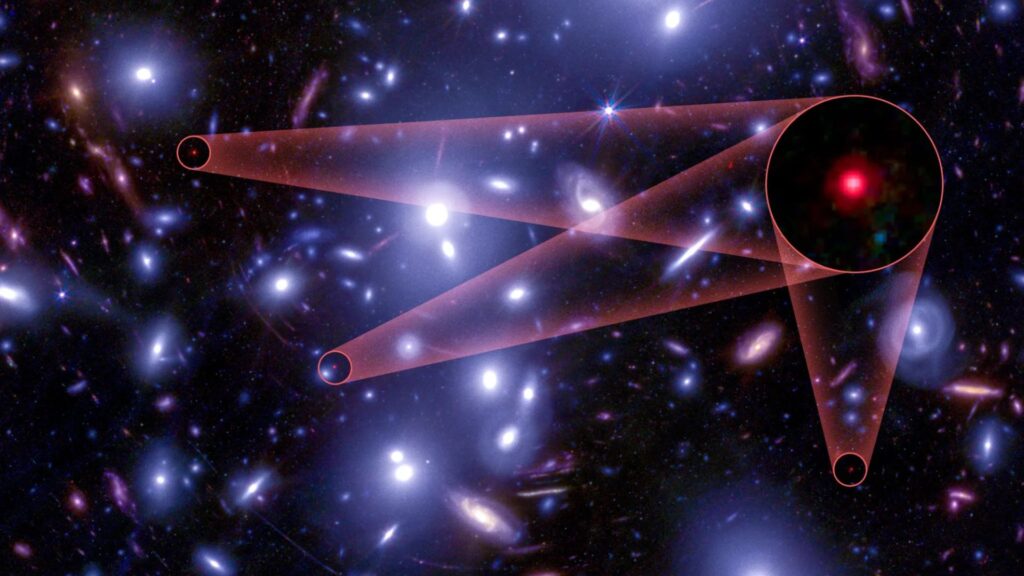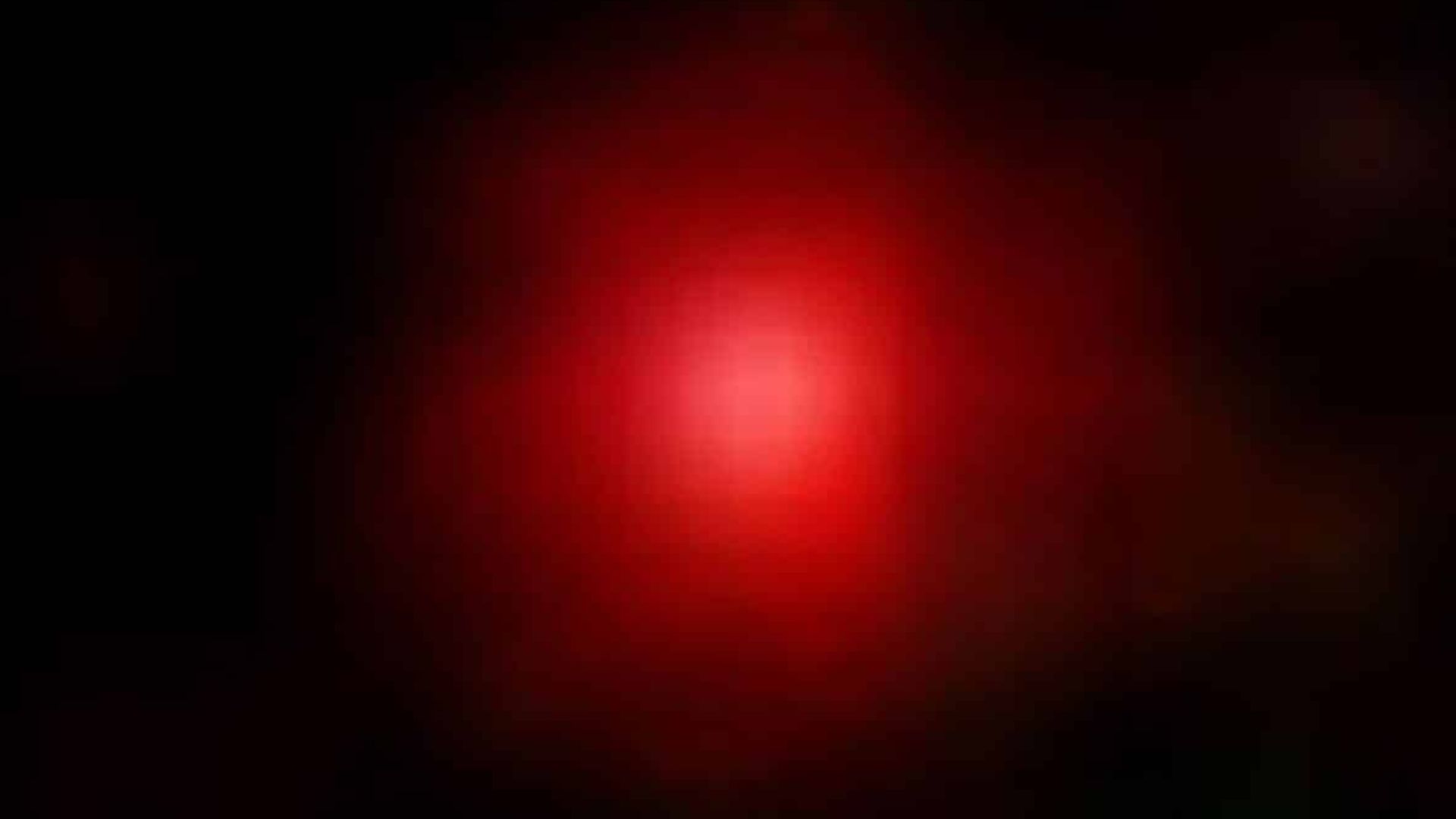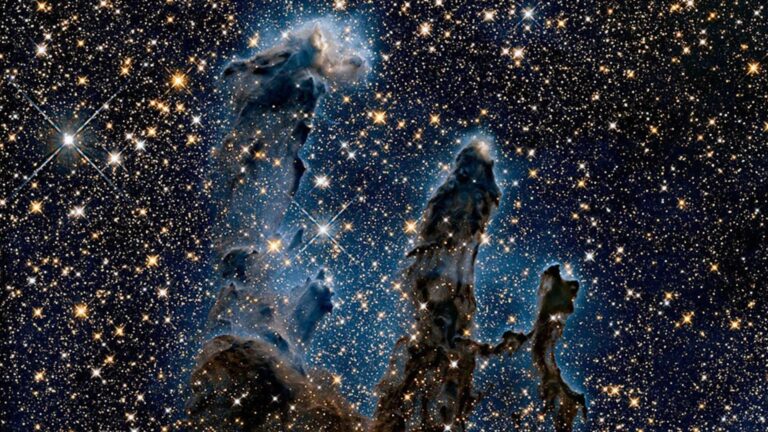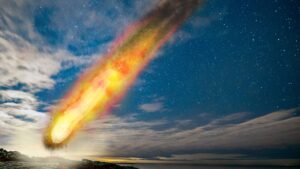
Scientists across multiple continents are grappling with enigmatic cosmic phenomena that upend conventional understanding of the universe’s structure and composition. Three groundbreaking discoveries announced in recent months—ranging from an apparently “naked” supermassive black hole to record-setting gravitational-wave observations and ultra-sensitive dark matter searches—highlight how modern astronomy continues to reveal mysteries at every turn.
A “Naked” Supermassive Black Hole Defies Formation Theories
Using the James Webb Space Telescope, an international team led by Roberto Maiolino of the University of Cambridge identified QSO1, a supermassive black hole estimated at 50 million solar masses yet curiously lacking any detectable host galaxy (Quanta Magazine). Situated 13 billion light-years away and visible as it appeared 750 million years after the Big Bang, QSO1’s pristine chemical makeup—almost pure hydrogen and helium with oxygen abundances under 1% of solar values—suggests it formed before widespread star formation.
The research, detailed on arXiv, indicates that QSO1’s mass is at least two-thirds that of the surrounding matter, with some calculations placing the ratio as high as 90% black hole. James Regan, an astrophysicist not involved in the study, commented, “We’ve never seen anything like that before,” underscoring the challenge QSO1 poses to existing models of galactic coevolution and black hole seeding.
Gravitational Waves Confirm Hawking’s 1971 Theorem
In a separate milestone, the LIGO–Virgo–KAGRA collaboration achieved unprecedented precision in measuring black hole mergers. The event GW250114, detected on January 14, 2025, registered a signal-to-noise ratio of 80, triple that of the first-ever gravitational-wave detection in 2015 (Space.com).
This clarity allowed researchers to confirm Stephen Hawking’s 1971 area theorem, which predicts that the total event-horizon area of black holes cannot decrease during a merger. The GW250114 data provided the first direct observational proof of this fundamental aspect of black hole thermodynamics.
Moreover, analysis of the 2019 merger GW190412 yielded the first measurement of a “kick” velocity imparted to the newly formed black hole. Pennsylvania State University astrophysicist Koustav Chandra noted that the remnant black hole raced away at 31 miles per second, fast enough to escape its original gravitational environment. “This is one of the rare occasions in astrophysics where we reconstruct the complete three-dimensional motion of an object billions of light-years away,” Chandra said.
Dark Matter Searches Reach Unprecedented Sensitivity
Meanwhile, efforts to detect the invisible substance comprising 85% of the universe’s matter have hit new milestones. The LUX-ZEPLIN experiment in South Dakota, employing a dual-phase xenon detector, analyzed 280 days of data to constrain the properties of weakly interacting massive particles (WIMPs) with sensitivity nearly five times better than previous limits (Daily Galaxy). Although no definitive WIMP signals emerged, the results significantly narrow the parameter space for heavy dark matter candidates.
Concurrently, the QROCODILE experiment at the University of Zurich deployed superconducting nanowire detectors capable of sensing light dark matter particles with masses lower than that of an electron. During a 400-hour science run, the team observed unexplained events that, while not yet confirmed as dark matter interactions, allowed them to set the first directional constraints on sub-electron-mass dark matter. Hebrew University physicist Yonit Hochberg remarked, “For the first time, we’ve placed new limits on especially light dark matter,” emphasizing that directional detection could be crucial for distinguishing genuine signals from backgrounds.
Implications for Cosmic Evolution and Fundamental Physics
Collectively, these discoveries underscore how continuing advances in observational techniques—from infrared space telescopes to gravitational-wave observatories and ultra-sensitive particle detectors—are reshaping our understanding of cosmic history and the fundamental laws governing the universe. The “naked” black hole QSO1 challenges models of galaxy–black hole coevolution, gravitational-wave confirmations affirm decades-old theoretical predictions, and cutting-edge dark matter searches probe the very fabric of matter in the cosmos.
As researchers refine theoretical frameworks and plan next-generation experiments—such as the Einstein Telescope for gravitational waves and proposed space-based dark matter detectors—the coming years promise even deeper insights into the universe’s darkest and most mysterious constituents.











